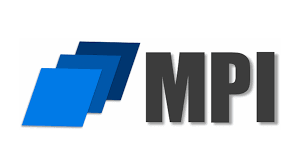World’s Most Expensive Domains: In-Depth Analysis
The domain name industry is a fascinating and constantly evolving sector of the digital world. With billions of websites and online platforms vying for attention, the value of a memorable, relevant, and easy-to-spell domain name cannot be understated. In recent years, several high-profile domain name acquisitions have captured the attention of the global tech community, showcasing the significant financial investments that some companies are willing to make to secure the perfect URL.
In this article, we will delve into some of the most expensive domain name purchases in history, analyzing the motives behind these acquisitions and the impact they have had on the brands and companies involved.
1. Chat.com: A $15.5 Million Investment in Conversational AI
In 2024, OpenAI made headlines with its acquisition of Chat.com for a staggering $15.5 million. This purchase came on the heels of the company’s acquisition of AI.com from Google for $11 million the previous year, solidifying OpenAI’s position as a leader in the field of artificial intelligence.
The decision to acquire Chat.com was driven by OpenAI’s desire to promote its flagship conversational AI platform, ChatGPT. By owning a domain name as simple and memorable as Chat.com, OpenAI was able to strengthen its brand identity and make its services more accessible to users worldwide. The domain name also served as a valuable marketing tool, allowing OpenAI to capitalize on the rise of conversational AI technology.
According to search data from Semrush, ChatGPT receives over 500 million monthly searches, with an average visit duration of 10 minutes and 56 seconds. While the bounce rate for the site is relatively high at 87.11%, the sheer volume of traffic indicates the widespread interest in OpenAI’s conversational AI offerings.
2. Tesla.com: A $11 Million Investment in Brand Clarity
In 2014, Tesla Motors made a bold move by purchasing the domain name Tesla.com for $11 million. Prior to this acquisition, the company had operated under the domain TeslaMotors.com, but the transition to Tesla.com marked a significant milestone in Tesla’s evolution as a brand.
Elon Musk, the CEO of Tesla Motors, revealed that the negotiations for the Tesla.com domain name had spanned nearly a decade before the deal was finalized. The investment was seen as a strategic move to streamline Tesla’s online presence and enhance its global visibility. As Tesla expanded its product offerings beyond electric vehicles to include solar energy solutions and battery storage, having a simple and direct domain name like Tesla.com made it easier for customers to find and engage with the brand.
Search data from Semrush shows that Tesla-related searches have been on the rise over the past decade, peaking in March. The Tesla.com website receives an impressive 27.8 million visits, with an average visit duration of 7 minutes and 55 seconds. The bounce rate for the site is relatively low at 38.73%, indicating that visitors are actively engaging with the content and products offered by Tesla.
3. Facebook.com: An $8.5 Million Investment in Corporate Identity
In 2010, Facebook made waves in the tech industry by acquiring the domain name Facebook.com for $8.5 million. This purchase was part of the company’s efforts to streamline its online presence and establish a strong corporate identity. Prior to this acquisition, Facebook had been using the domain Fb.com for its internal email system and branded URL shortening service.
The decision to invest in the Facebook.com domain name was driven by the company’s rapid growth and expansion into new markets, particularly in the mobile and communication sectors. By owning a short and easily recognizable domain like Facebook.com, the social media giant was able to reinforce its brand identity and justify the premium price paid for the domain.
Despite competition from other social media platforms, Facebook continues to attract over 750 million monthly searches, according to search data from Semrush. The website receives a staggering 30.2 million visits, with an average visit duration of 14 minutes and 43 seconds. While the bounce rate for the site is relatively high at 84.87%, the sheer volume of traffic indicates the enduring popularity and influence of the Facebook brand.
4. Beer.com: A $7 Million Investment in Industry Domination
In 2004, Beer.com made headlines as one of the first major domain name sales, fetching a whopping $7 million from the beer conglomerate Interbrew (now Anheuser-Busch InBev). The domain was originally purchased by two Canadian entrepreneurs for a mere $80,000 before being sold to Interbrew for a significant profit.
Over the years, Beer.com has remained a powerhouse in the online beer industry, attracting thousands of visitors and maintaining a loyal following of beer enthusiasts. In 2021, the domain was auctioned off alongside 26 other beer-related domains in various languages, fetching between $1 million and $5 million.
Today, Beer.com continues to be a hub for beer lovers around the world, with the main page greeting visitors with the slogan “Own the name, own the industry.” While search interest in beer-related topics has remained stable over the past 15 years, the website still attracts 1.7k visits, with an average visit duration of 1 minute and 10 seconds. The bounce rate for the site is 78.68%, indicating that visitors are actively engaging with the content and resources available on the site.
In conclusion, the world of domain name acquisitions is a high-stakes game, with companies willing to invest millions of dollars to secure the perfect URL. The acquisitions of Chat.com, Tesla.com, Facebook.com, and Beer.com have all had a significant impact on the brands and companies involved, helping to strengthen their corporate identities, enhance their online visibility, and attract a loyal following of customers and enthusiasts.
As technology continues to evolve and new trends emerge in the digital landscape, it is likely that we will see even more high-profile domain name acquisitions in the years to come. Whether for branding purposes, marketing strategies, or industry domination, the world’s most expensive domains will continue to play a vital role in the online ecosystem, shaping the way we connect, communicate, and interact with brands and businesses around the world.

